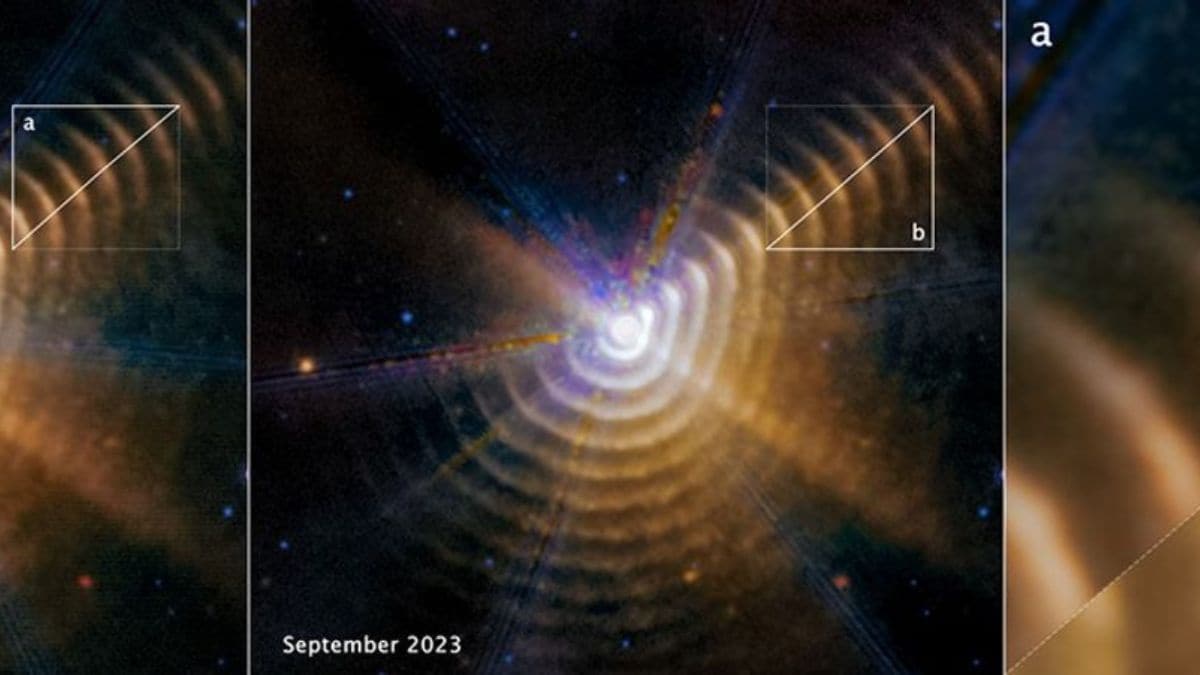
A system of two massive stars in the Milky Way, Wolf-Rayet 140, has been closely studied, revealing the formation and outward expansion of carbon-rich dust shells. Data from the James Webb Space Telescope has shown 17 concentric shells expanding at regular intervals, moving outward at a speed of approximately 1 percent of the speed of light. These findings provide insight into how elements essential for life, like carbon, are distributed across space, contributing to a broader understanding of cosmic evolution.
Dust Shell Movement Captured Through Observations
As per the latest report by NASA, the system consists of two stars in an elongated orbit. When these stars come closest, their stellar winds collide, compressing material and forming carbon-rich dust. As reported in an official press release by NASA, Emma Lieb, a doctoral student at the University of Denver and the study’s lead author, noted that the consistent velocities of these shells were confirmed by Webb’s detailed observations.
Over 14 months, these shells were shown to expand visibly, with the dust moving at over 1,600 miles per second. Jennifer Hoffman, a professor at the University of Denver and co-author of the study, highlighted how this system defies typical astronomical timelines, showing rapid changes on an annual scale.
Formation of Dust Linked to Star Dynamics
It was observed that the dust is generated every eight years as the stars reach their closest orbital point. Ryan Lau, an astronomer at NSF NOIRLab and co-author, stated that mid-infrared imaging was critical for detecting these cool dust formations. He emphasized the significance of capturing the dust formation process with unprecedented precision.
Future of Wolf-Rayet 140
The larger of the two stars, a Wolf-Rayet star, is nearing the end of its life and may explode as a supernova or collapse into a black hole. Lau pointed out that the survival of such carbon-rich dust could help answer questions about the origins of cosmic dust. These findings could play a key role in understanding the processes behind the creation of rocky planets and solar systems



